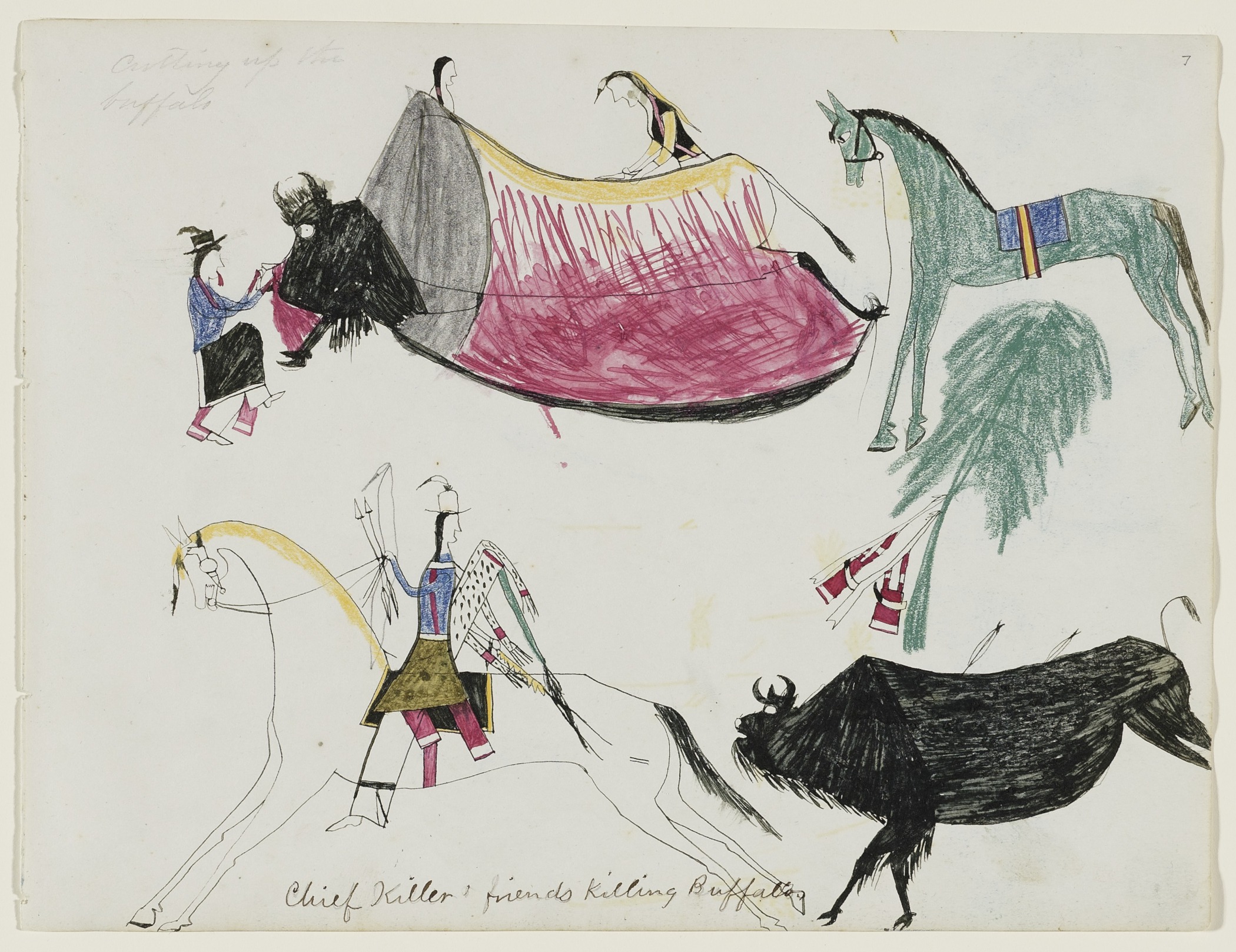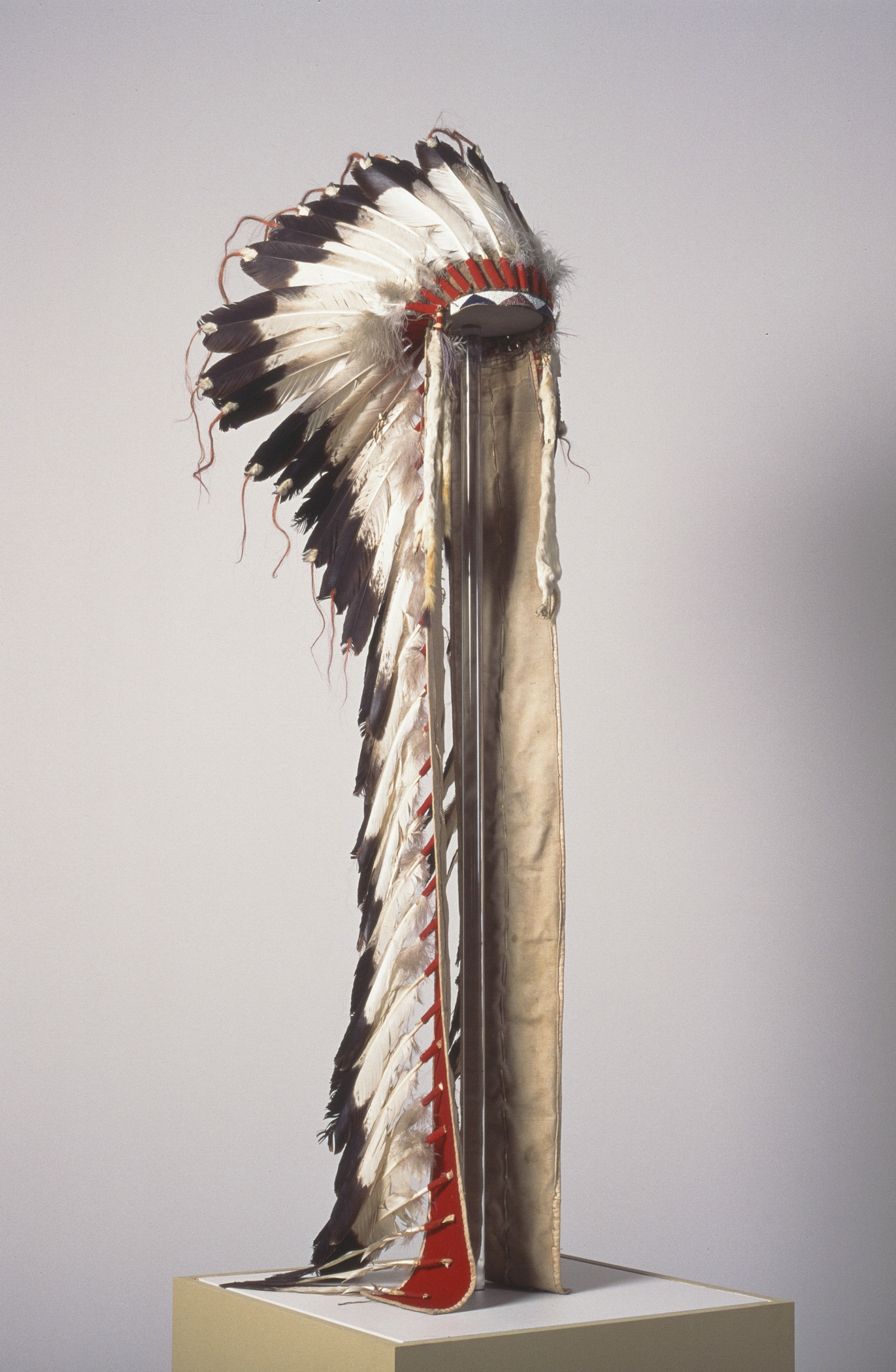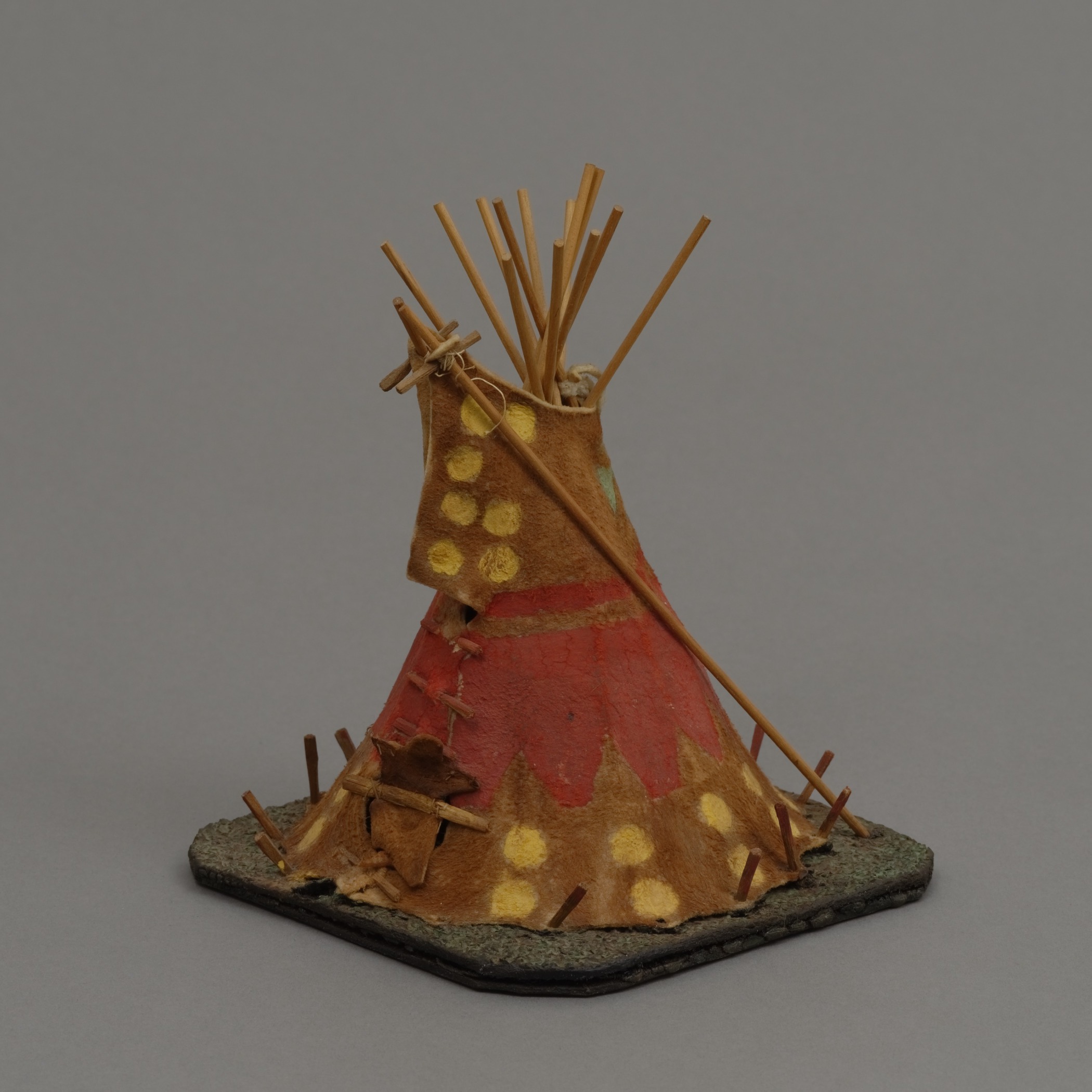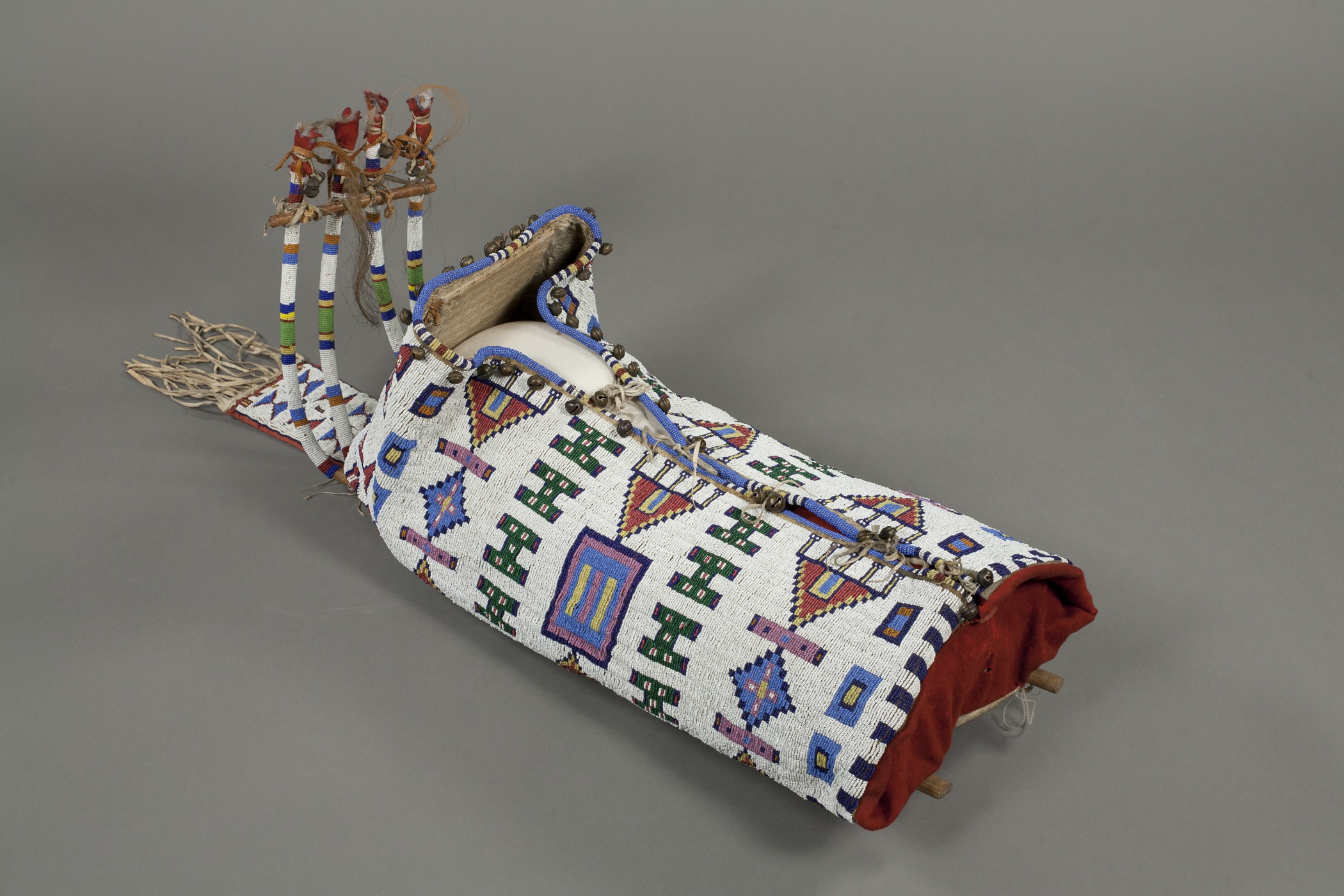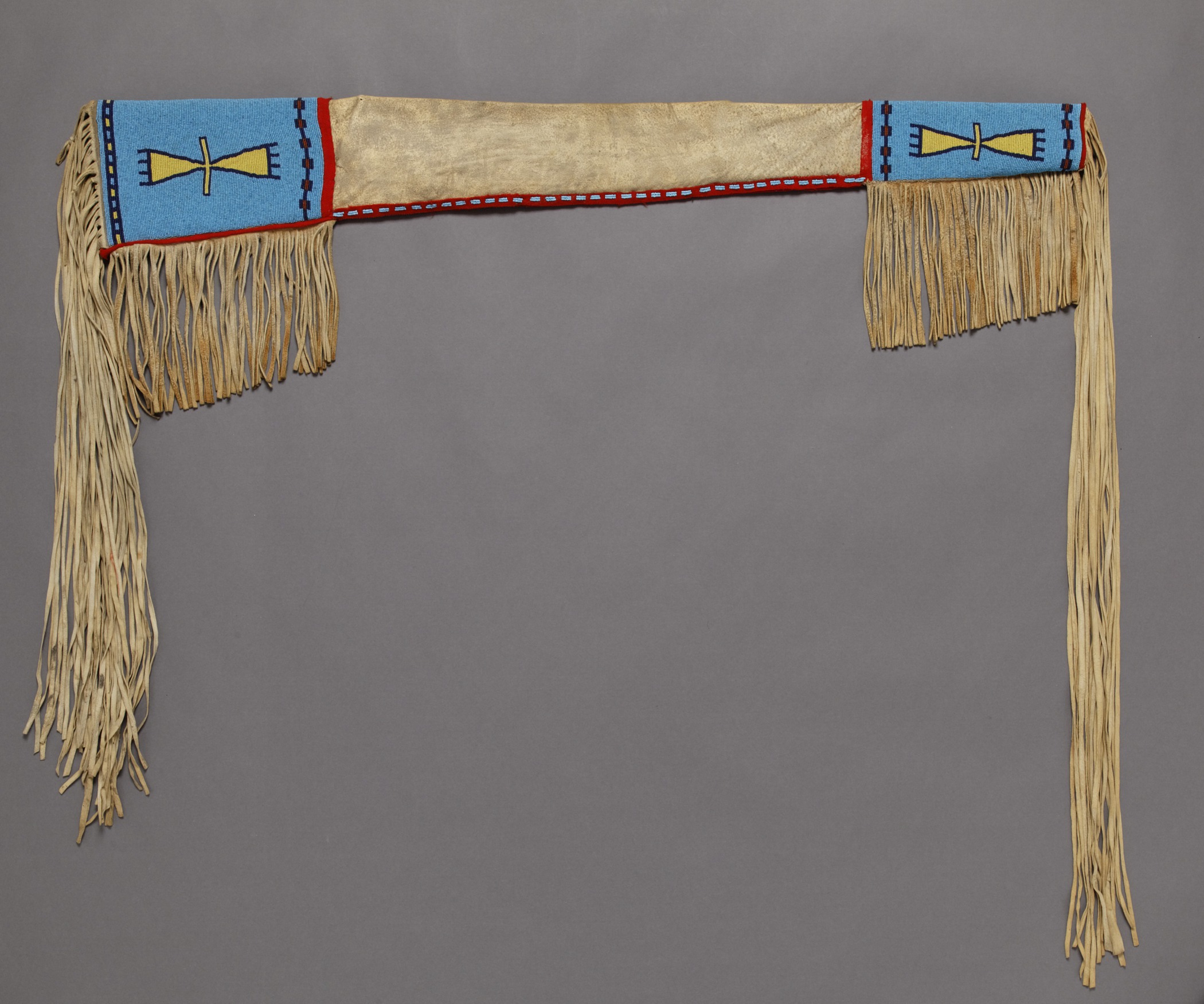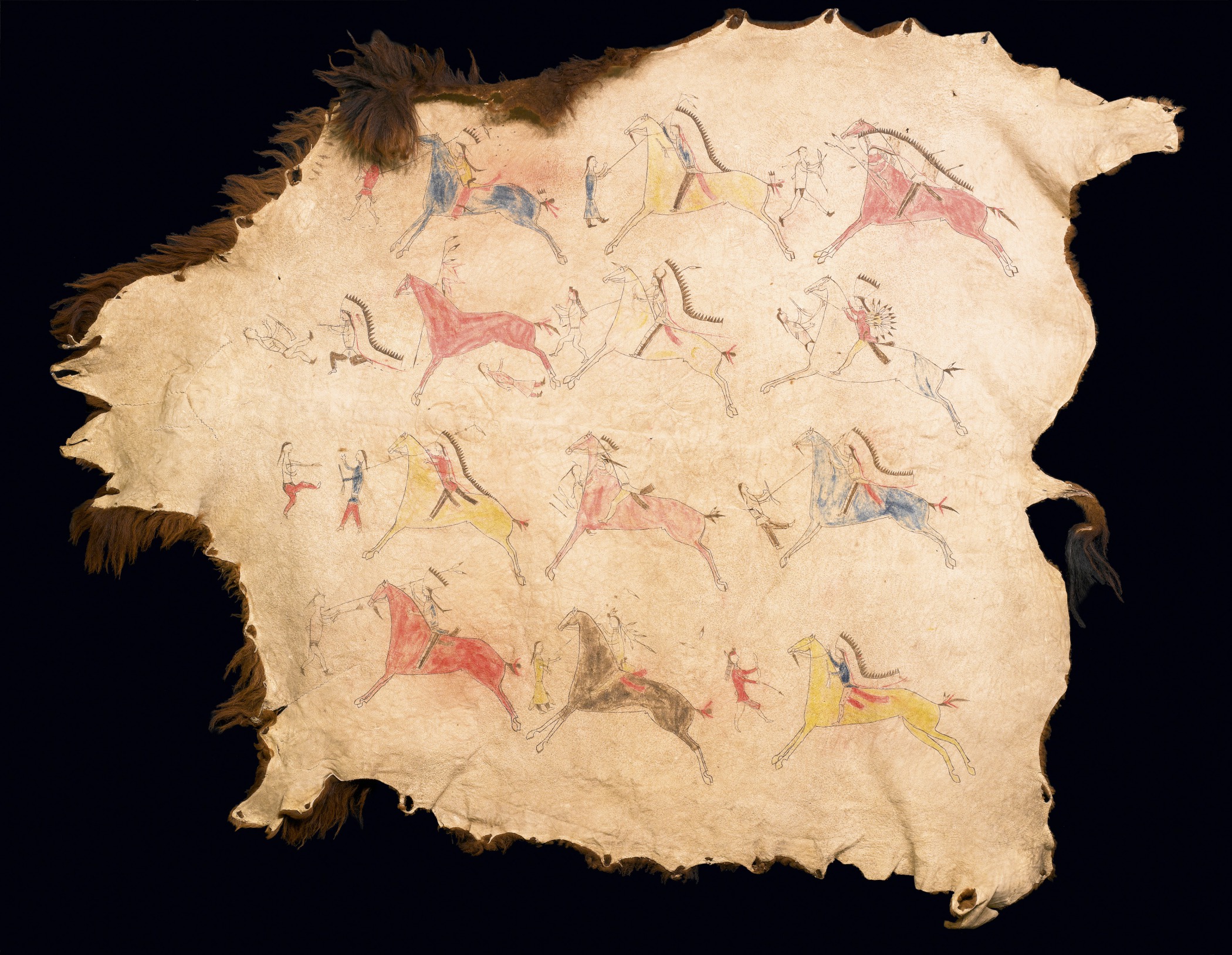Historically, the people of the Plains dressed in clothing made of animal hides—particularly deer, elk, buffalo, bighorn sheep, and antelope. They decorated the hides with fringe, furs, porcupine quills, shells, and feathers. Toward the end of the nineteenth century, cloth began to replace hides as the main material for clothing, and glass beads from Europe in many cases replaced porcupine quills and shells. Native American clothing also influenced European dress. For instance, moccasins—an extremely versatile, comfortable form of footwear—were made both for personal use and for sale to Europeans who wanted to own and wear them.
Today, Native Americans continue to make traditional clothing for special occasions and gatherings. The act of creating and wearing traditional clothing is highly personal and sacred. It celebrates cultural identity and individual expression, and connects the maker and the wearer to his or her past and present community.






